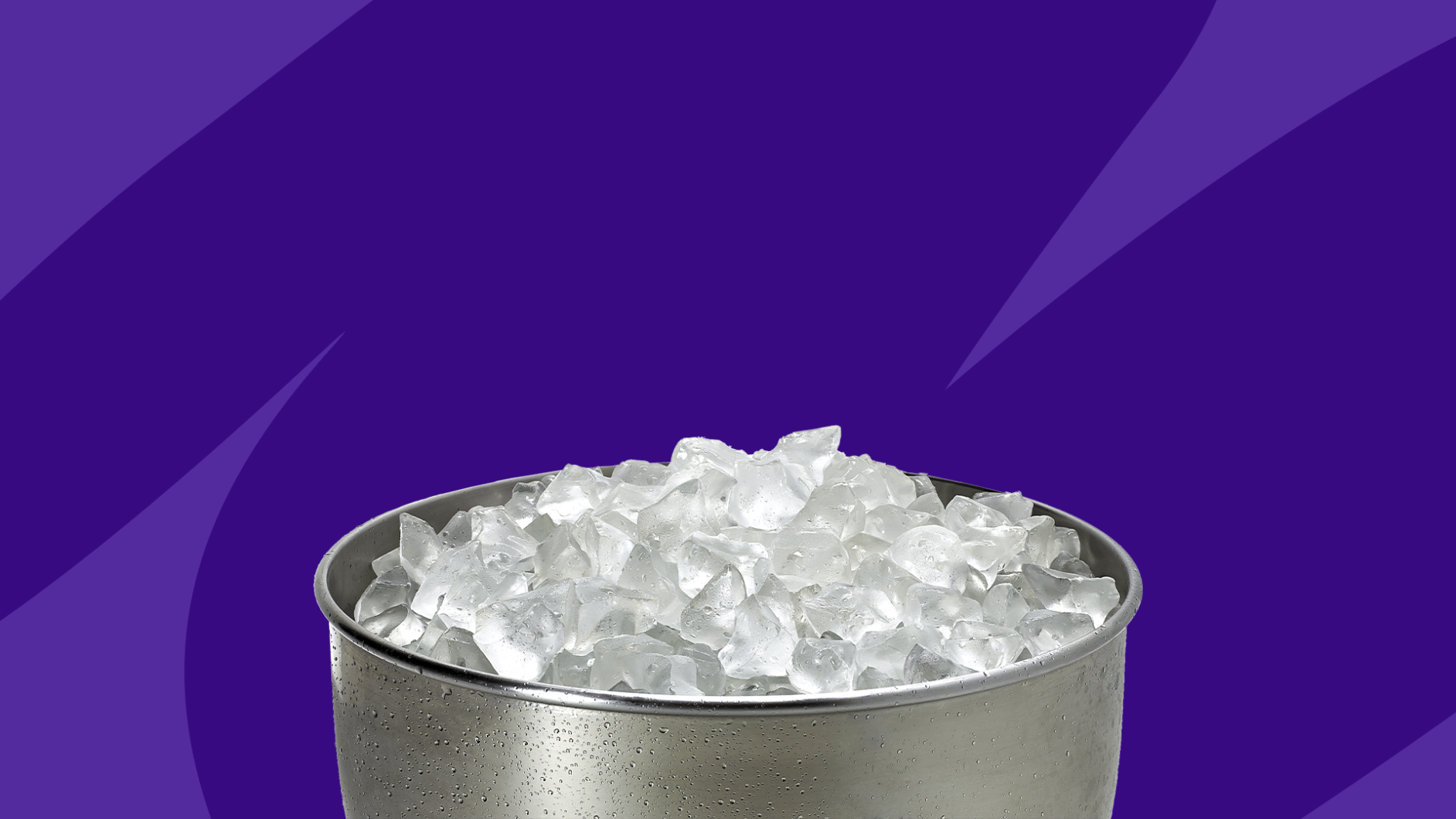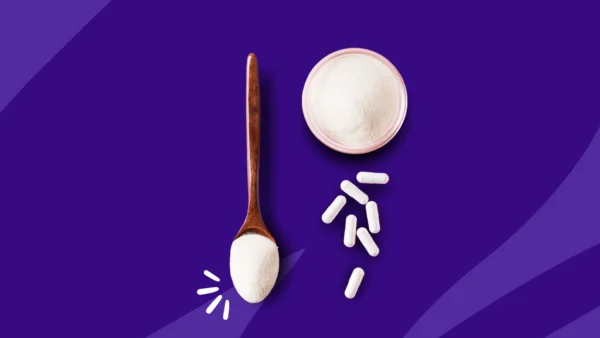What is an ice bath? | Ice bath science | Benefits of an ice bath | Risks and precautions | Incorporating ice baths
Ice bath therapy has been gaining popularity among athletes and fitness enthusiasts to speed up recovery and alleviate sore muscles. However, even people who aren’t professional athletes may find that cold water exposure helps reduce inflammation, boost energy levels, and improves their overall health. Ice bath therapy involves immersing the body in cold water, typically around 50 to 59°F for 5 to 10 minutes.
With various claims of ice bath benefits, you may want to dive deeper into the science behind them to see if an ice bath might be right for you. It’s also a good idea to consult a healthcare provider before trying ice bath therapy, especially if you have any underlying health conditions.
Read on to learn more about ice baths and their potential health benefits.
What is an ice bath?
An ice bath, also known as cold water immersion or a cold plunge, is a therapeutic process in which a person immerses themselves in ice-cold water. The main reason for cold plunging is to reduce muscle soreness and speed muscle recovery. How does it work? Proponents of ice bath therapy suggest that it tightens blood vessels, improves mood, and boosts the immune system, which may help reduce body swelling and inflammation.
During an ice bath, individuals will submerge in cold water (usually around 50-59°F) for about 10-20 minutes. However, everyone has different tolerance levels to cold temperatures. Therefore, the duration and temperature of the ice bath should be adjusted according to your comfort zone. While there are many benefits of ice baths, you may want to consult a healthcare professional before adding cold water immersion therapy to your regular routine.
The science behind ice baths
When the body is exposed to cold temperatures, the blood vessels narrow or constrict, reducing blood flow to the skin’s surface and extremities. This helps keep the warmth in the main part of our body and preserves body temperature. This natural reaction prevents us from getting too cold or hypothermic.
The body also releases various hormones and triggers the central nervous system, particularly the vagus nerve. As a result, the body can maintain blood pressure and regulate the circulatory system. The narrowing and relaxing of blood vessels may help support the removal of waste products such as lactic acid, which can build up during intense physical activity and lead to muscle soreness.
Besides physical benefits, ice baths may also positively affect mental health. Cold exposure may help increase oxygen levels in the brain, boosting energy levels, mood, and cognitive function. More research is needed to fully understand the range of benefits associated with ice baths. However, the available evidence shows that cold water exposure may positively affect overall health and mental well-being.
10 ice bath benefits
Ice bath benefits can range from reducing inflammation to promoting overall health. These benefits may vary depending on the person. Below is a comprehensive list of benefits associated with ice baths.
1. Eases sore and aching muscles
An ice bath may help relieve soreness and muscle pain after an intense workout. Cold immersion is believed to soothe the body and provide relief while reducing inflammation. Results from one study showed that athletes who took a cold-water bath felt less muscle soreness and had better recovery of their muscle power 24 hours after their jiu-jitsu training session.
2. Increases energy levels
Subjecting your body to cold temperatures can stimulate the release of adrenaline and endorphins, which may lead to increased energy levels. One study found that swimmers experienced feeling more energetic after four months of winter swimming.
These feelings were self-reported, with some swimmers also experiencing increased pain relief.
3. Speeds up physical recovery
Cold water immersion may constrict blood vessels and reduce blood flow, which may help speed up the recovery time after exercise. One study found that an ice bath after intense exercise may help reduce muscle soreness and make you feel less tired, especially right after the workout. However, it might not have a significant impact on specific blood markers of recovery.
4. Improves discipline
By regularly overcoming the discomfort associated with cold exposure, individuals can develop better discipline and mental focus. This habit can translate into other aspects of life, like sticking to a workout routine or following a strict diet.
5. Lowers body temperature
Not surprisingly, ice baths effectively lowers core body temperature after an intense workout or in situations where rapid cooling is necessary. In some cases, an ice bath can be lifesaving, especially when treating heat stroke. One study found that in the treatment of heat-related illnesses like heatstroke, ice-water immersion is the most rapidly effective method of cooling. It also mentions the importance of recognizing and treating heat-related illnesses early for successful outcomes.
6. Reduces inflammation and swelling
Ice baths can reduce inflammation and swelling by narrowing blood vessels and decreasing blood flow to muscles. Research suggests that multiple ice baths following exercise-induced muscle damage may help reduce muscle damage and inflammatory response but does not significantly affect muscle function recovery. Another study found that taking an ice bath after a tough workout isn’t more effective in reducing muscle inflammation and swelling compared to doing light exercises for recovery.
7. Boosts your immune system
Regular exposure to cold temperatures may help increase the production of white blood cells, boosting the body’s immune response. As a result, regular cold water immersion could potentially strengthen the immune system and make it more prepared against threats. One study involving winter swimmers found that regular cold water immersion boosts the immune system by increasing key immune cells and interleukin-6 levels.
8. Helps burn fat and improve insulin sensitivity
Studies show that ice baths may help stimulate a certain kind of fat tissue in our bodies called brown adipose tissue (BAT). When BAT is active, it uses up glucose and fats to produce heat, which may lead to increased calorie burning and improved insulin sensitivity. As a result, ice baths might help in burning fat and preventing obesity and Type 2 diabetes.
9. Improves sleep quality
Ice baths may help improve sleep quality by regulating body temperature and promoting relaxation. Better sleep may lead to improved recovery and mental health. Various studies have looked into how taking ice baths can affect sleep and recovery in runners. One study found that runners who took a full-body ice bath, including their heads, were less restless and moved less during sleep. They also spent more time in deep sleep at the start of the night.
10. Neurocognitive benefits
Regularly exposing yourself to cold water may lead to better mental clarity, focus, and memory. This improvement is likely due to the release of certain neurotransmitters, which may have positive effects on mood and cognitive function. One study found that regular ice baths may help reduce anxiety levels and improve life satisfaction, including in areas such as health and sexual satisfaction.
Ice baths offer a range of potential benefits for general health, fitness, and well-being. These advantages may be particularly helpful for those looking to improve their physical performance and overall quality of life.
Risks and precautions of ice baths
Although ice baths can provide various benefits, there are some potential risks and precautions to be aware of. The body’s stress response during cold water immersion may be harmful to some, especially those with underlying health problems.
People with existing medical conditions should consult a healthcare professional before trying ice baths. The constriction of blood vessels due to cold exposure may put stress on the heart, which may be dangerous for people with heart problems. In addition, people with peripheral neuropathy or other types of nerve or skin problems may experience worsened symptoms from ice baths.
Some people may have other concerns, such as feeling dizzy after an ice bath. Dizziness may result from the rapid constriction and dilation of blood vessels when transitioning from a cold to a warmer environment. Consider warming up gradually to reduce the strain on the body.
For additional safety tips while doing ice baths:
- Ensure water temperatures are between 50 to 60 degrees F
- Limit your time in the ice bath to 10-15 minutes
- Have a buddy present during the ice bath for support
- Avoid submerging your head, as this may increase the risk of hypothermia
- Get out immediately if you experience severe numbness, pain, or lightheadedness
By taking the necessary precautions and using safe practices, you may benefit from ice baths while reducing the potential risks.
Incorporating ice baths into your recovery routine
Incorporating ice baths into your recovery routine
There are different ways to add ice baths to your recovery routine. One method of using ice baths is to alternate them with active recovery exercises, such as light stretching or walking, to maximize their benefits. You may want to personalize your ice bath routine based on your specific needs, preferences, and physical activity level.
Temperature
When starting to add ice baths to your recovery routine, you may want to first consider the water temperature. Typically, water temperatures between 50°F and 59°F are recommended for best results.
Duration
When it comes to the duration of an ice bath, research suggests that immersing yourself for 10-15 minutes can be ideal. However, you may want to listen to your body and adjust the length of your sessions accordingly. Keep in mind that it might not be necessary or beneficial to use ice baths every day, as your body also needs time to rest and repair naturally.
Frequency
The frequency of ice baths may depend on the intensity of your workouts and how well your body responds to cold therapy. Some individuals might benefit from regular ice baths, while others may opt for them only after particularly hard workouts. As for showering after an ice bath, you could wait 15-20 minutes to give your body time to return to its normal temperature.
Adding ice baths to your recovery routine may help relieve muscle soreness and pain. However, you may want to personalize your routine when determining your ice baths’ duration, frequency, and timing. You can also consult a healthcare professional to ensure you use ice bath therapy safely and effectively.











